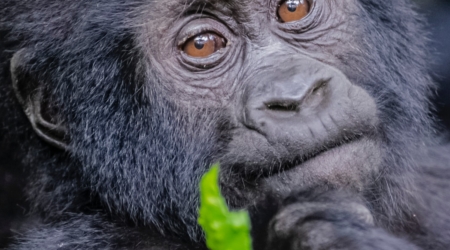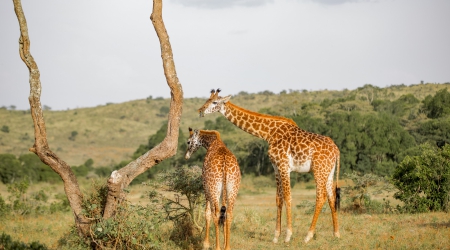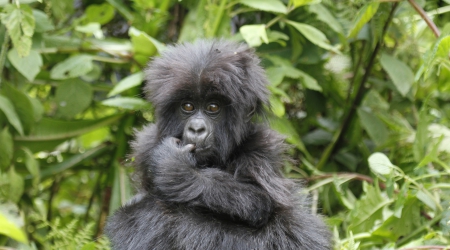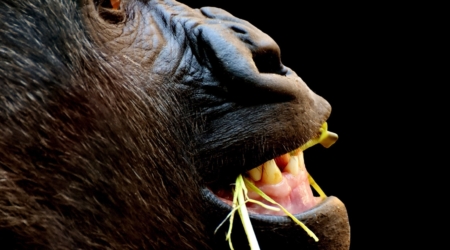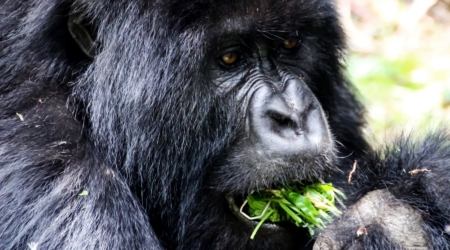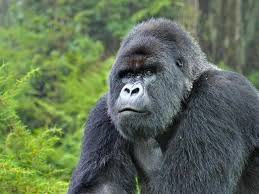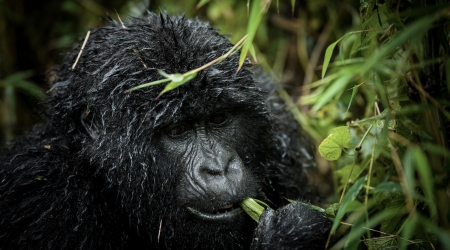Mountain gorillas are critically endangered species, which are genetically close cousins to human beings. Studies of fossils, genes, physiology and behavior revealed how the human lineage divided. The gorillas are complex and highly intelligent. The mountain gorillas share 98% DNA with human beings and resemble human beings in most aspects.
There are currently less than 800 mountain gorillas in the world and these live in Virunga Mountain Ranges, which extends to Rwanda, Democratic republic of Congo and Uganda and then in Bwindi impenetrable national park in Uganda.
Half of the mountain gorillas live in Virunga Mountain ranges with half of the gorilla population there living in Volcanoes National Park in Rwanda, about 20 living in Mgahinga National Park in Uganda and the remaining in Virunga national park in DR Congo. The remaining half of the world’s gorilla population live in Bwindi impenetrable Forest national park.
For over the years, the mountain gorillas have been under serious threat due to human activity through poaching, encroachment on their habitat, and political instabilities.
In the early 1980’s, there were less than 500 mountain gorillas left in the world with less than 250 gorillas left in Virunga Mountain ranges. This is because of the political instability that was in Democratic Republic of Congo, which led to lawlessness and there was increased poaching of gorillas.
There was also human encroachment on the forest in search of charcoal and wood, which depleted the forest. The political instabilities that ravaged the area worsened the situation with gorillas being killed for both meet and rebel activities.
As it was in Virunga mountain ranges, it was no exception in Bwindi National park in Uganda as there was prolonged political instabilities and lawlessness. There was no conservation of the park, as conservation in Bwindi National park started barely in 1991 when it was gazette as a National park.
The depletion of the mountain gorillas led to them to being classified as endangered specie as there was not going to be gorillas in the world since they are only located in this region and their depletion would mean no more mountain gorillas in the world!
It was first the intervention of the American researcher Dian Fossey who came to Rwanda to do research on the mountain gorillas and established her base in Volcanoes national park that brought the plight of the mountain gorillas to the whole world. Dian Fossey dedicated her life to conserving the lives of mountain gorillas by sensitizing the community and fighting poachers who were a big threat to the gorillas.
However, in 1986, Dian Fossey was assassinated by allegedly the poachers she was protecting from the mountain gorillas and was buried at her research center next to her favorite gorilla, digit.
Nevertheless, her effort did not die in vain as she had already brought the plight of the gorillas to be known by the world and all conservationist picked interest in conserving the mountain gorillas and the respective governments.
Through Dian Fossey fund, funds were raised to protecting the mountain gorillas, the governments started efforts of conserving the gorillas and attracting tourists from all over the world to come and do gorilla tracking. The proceeds from the sale of gorilla permits is used to pay rangers and compensate the community around rather than letting them encroach on the forest.
The gorilla population has since increased since 2000 and by 2010, the gorilla census put the number of gorillas to approximately 700 gorillas which is a tremendous increment.
Rwanda for example has seen a steady increase of gorillas with the estimated number of gorillas in 1970’s at 240 gorillas now increasing to 350 gorillas by 2010 census. Every year, there is gorilla naming of the young ones dubbed “Kwita Izina” and over 10 gorillas are named each year. With more conservation efforts made now, the gorillas which die of human activity has greatly reduced with most gorilla death attributed to natural causes.
This steady increment of the number of the gorillas and reduced death rate therefore has shifted the trend of mountain gorillas being endangered and now conservationist can proudly boast of their effort. Needless to say, the gorillas still face challenges from human encroachment on their habitat due to increased human population, the snares that kill them intended to catch other animals in the parks, the environmental changes which lead to prolonged drought and thus depleting the food in the parks.







